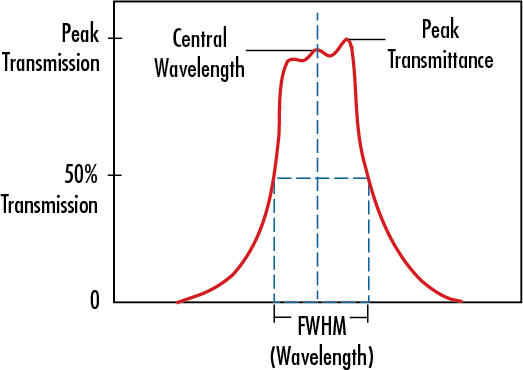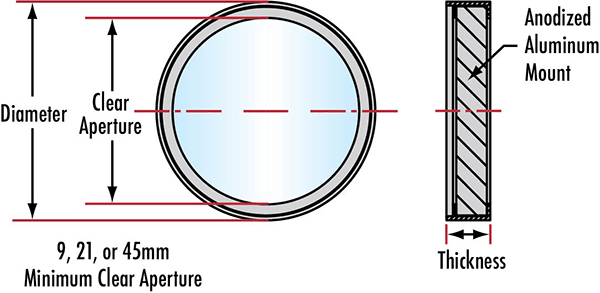
Traditional Coated Bandpass 193 – 399nm Interference Filters are used to selectively transmit a narrow range of wavelengths while blocking all others. They are ideal for a range of biomedical and quantitative chemical applications. Bandpass interference filters are widely used in instrumentation for various applications, including clinical chemistry, environmental testing, colorimetry, elemental and laser line separation, flame photometry, fluorescence, and immunoassays. In addition, Traditional Coated Bandpass 193 – 399nm Interference Filters are used to select discrete spectral lines from arc or gas discharge lamps and to isolate a particular line from Ar, Kr, Nd:YAG, and other lasers. Traditional Coated Bandpass 193 – 399nm Interference Filters are often used in conjunction with with laser diode modules and LEDs.
Traditional coated filters are fabricated in three sections, one of which determines the center wavelength (CWL), bandwidth (FWHM), and the shape of the transmittance curve while the other two control the blocking range of the filter. The bandpass section of Traditional Coated Bandpass Interference Filters is made by repetitive vacuum deposition of thin layers of partially reflecting dielectric compounds on a glass substrate. Rejection of wavelengths resulting from destructive interference is limited to within 15% of the central wavelength, therefore, additional glass or metallic blockers must be added to reduce out-of-band transmittance. Metallic blockers, such as layers of silver, reflect and absorb radiation outside of the filter passband and negate higher order passbands from X-ray to the long-wave infrared (LWIR). The blocking capabilities of metallic blockers are augmented by the addition of color transmitting glass and custom dyes that absorb UV or long wavelength radiation. After thin film deposition is complete, the three sections are scribed, laminated, cut, and mounted.



or view regional numbers
QUOTE TOOL
enter stock numbers to begin
Copyright 2024, Edmund Optics Singapore Pte. Ltd, 18 Woodlands Loop #04-00, Singapore 738100
California Consumer Privacy Acts (CCPA): Do Not Sell or Share My Personal Information
California Transparency in Supply Chains Act